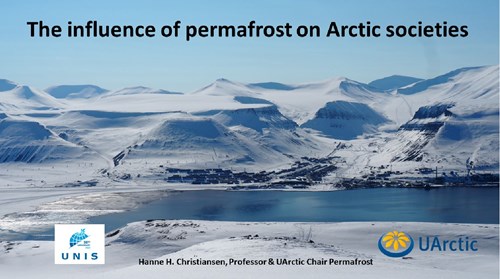It was Arctic DTU, Technical University of Denmark; Asiaq, Greenland Survey and the Joint Arctic Command, Danish Defence that hosted the conference.
In Katuaq Nuuk Cultural Centre 24 keynote presentations across sea, cryopshere and land were given in the three-day conference, with associated panel discussions and parallel discussion sessions. In the panel discussions also the future higher educational collaboration potential within the Arctic was discussed.
UArctic Chair in Permafrost Physical Processes, UNIS professor Hanne H. Christiansen gave a keynote on permafrost and its influence on Arctic communities, with examples of the ongoing work of the PermaMeteoCommunity project in Svalbard, which she leads, and with examples of Greenlandic permafrost research by Danish Technical University (DTU) permafrost colleagues. Hanne highlighted the expansion of the airport in Ilulissat, central west Greenland, as an example where permafrost needs to be considered when building roads to connect the new parts of town over ice-rich ground.

In a two-day parallel session on long-term monitoring of the cryosphere Svalbard Integrated Earth Observing System (SIOS) was presented together with the sister initiative Greenland Integrated Observing System (GIOS) and other monitoring initiatives mainly in Greenland. Closer collaboration particularly within logistics coordination was discussed, as scientists identify this as a main challenge for increasing collaboration particularly across borders. But also, further research within the large-scale environmental and climatic gradients within the Arctic was listed as important. Clearly, the Greenland-Svalbard area represents one such important gradient.
